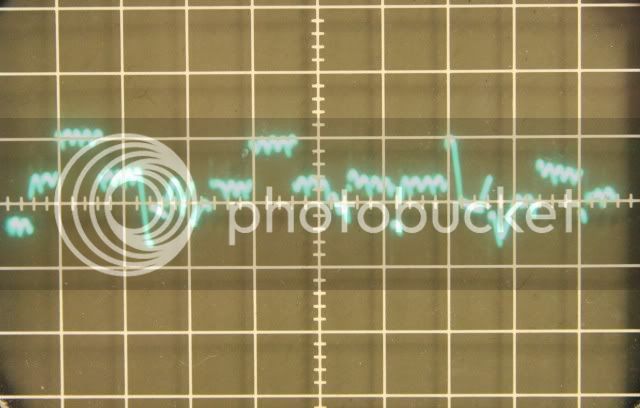ionbeam
2 FUN
Curve ball -- Youse guys with low readings -- Next time your FJR is warmed up and running put your volt meter on the AC scale and measure across your battery. Let us know what you read.
If there is AC electrical noise on the power wires of the motorcycle the DC scale of the DMM will average the noise and return an artificially low voltage reading. Home picture of my FJR's electrical system, the noise is riding on top of the 14 VDC battery voltage causing my Datel to read 13.8 volts:

If there is AC electrical noise on the power wires of the motorcycle the DC scale of the DMM will average the noise and return an artificially low voltage reading. Home picture of my FJR's electrical system, the noise is riding on top of the 14 VDC battery voltage causing my Datel to read 13.8 volts:







































































